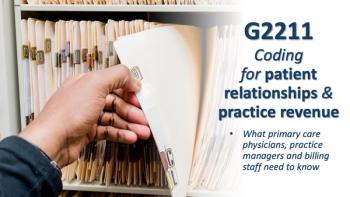Join us Sept. 19 & 20 in Philadelphia at Practice Rx, our new conference for physicians and office administrators to help improve your medical practice and your bottom line.
Boost Patient Trust, Referrals at Your Medical Practice
Here are three strategies medical practices can use to build word of mouth referrals and humanize their providers.
A
This huge trust gap presents a major opportunity for practices to strengthen communication and cultivate positive public perception.
Here are three of the report's findings, and what practices should do about them:
Finding #1. Americans define provider quality based on doctor-patient interactions and doctors’ personality traits, rather than the effectiveness of the care provided or the patient’s own health outcomes. The report goes on to say that Americans define a quality doctor as someone who listens, is attentive, or shows interest in them (18 percent).
Action Item. Your marketing strategies need to demonstrate that your providers are personable and approachable. A great way to do this is through short videos posted to your practice’s website and shared on social media channels. Use language like, “I hear a lot of patients tell me that…” or, “As a parent myself, I have similar concerns about…” Using key phrases to demonstrate that providers are listening to patients and can empathize with them is an excellent way to demonstrate a connection with the public.
Rather than throwing money at traditional advertising that may only work in the short run (if you're lucky), think about strategies that will engage the public in conversation. Speaking at local conferences or workshops is one way of doing this. Events allow people to connect with providers in a more casual environment and create opportunities for positive lasting impressions.
Finding #2. Americans report that they would trust word-of-mouth and personal recommendations from doctors far more than provider quality data coming from the government or third parties. In fact, six in 10 Americans say they would trust quality ratings of doctors or other healthcare providers they receive from friends or family members.
Action Item. Provide a platform for patients to share how much they appreciate your care. Using social media is no longer an option in healthcare. Connecting to their doctor’s office on Facebook, Twitter and other social media channels is something that consumers expect. Utilize these tools to build a conversation around your practice and provide an environment where patients can share your services with their friends.
In addition to creating buzz in the digital space, make an effort to network with primarycare physicians or other doctors who may provide referrals. Bringing lunch to their office is a great way to build networking time into your schedule and is especially beneficial if you are adding a new provider to the practice.
Finding #3. Beyond recommendations from other doctors or family members, Americans overwhelmingly lack trust in quality ratings of healthcare providers. Only three in 10 people say they trust quality ratings from patients who are surveyed anonymously about the quality of care they received from a community or advocacy group that evaluates healthcare providers.
Action Item. Create a survey for new patients that asks them to identify how they learned about your practice. If patients aren’t identifying billboards, print ads, or TV spots, you need to re-evaluate how you're spending your advertising budget. Rather than focusing mainly on traditional advertising strategies, think about creating sharable online content, like videos, that patients can comment on and share with their friends.
The mistrust that people feel for the medical industry is an issue that can’t be swept under the carpet. If healthcare facilities commit to implementing strategies that build word of mouth referrals and humanize their providers, practices will successfully build trust with their target audience and break down barriers caused by lack of communication.
Newsletter
Optimize your practice with the Physicians Practice newsletter, offering management pearls, leadership tips, and business strategies tailored for practice administrators and physicians of any specialty.









